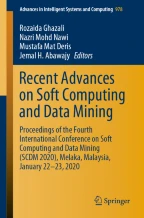Abstract
Along with the rapid development of new science and technology, smartphone functionality has become more attractive. Smartphones not only bring convenience to the public but also the security risks at the same time through the installation of malicious applications. Among these, Android ransomware is gaining momentum and there is a need for effective defense as it is very important to ensure the security of smartphone user. There are various analysis techniques used to detect instances of Android ransomware. In this paper, we proposed the Android ransomware detection using dynamic analysis technique. Two dataset were used which is ransomware and benign dataset. The proposed approach used the system calls as features which obtained from dynamic analysis. The classification algorithms Random Forest, J48, and Naïve Bayes were used to classify the instances based on the proposed features. The experimental results showed that the Random Forest Algorithm achieved the highest detection accuracy of 98.31% with lowest false positive rate of 0.016.
Access this chapter
Tax calculation will be finalised at checkout
Purchases are for personal use only
Similar content being viewed by others
Notes
References
Zulkifli A, Hamid IRA, Shah WM, Abdullah Z (2018) Android malware detection based on network traffic using decision tree algorithm. Adv Intell Syst Comput 700:485–494
Abdullah Z, Saudi MM, Anuar NB (2017) ABC: android botnet classification using feature selection and classification algorithms. Adv Sci Lett 23(5):4717–4720
McAfee, Mobile Threat Report Criminal Quest for Money Could Make 2018 the Year of Mobile Malware
Cluley G (2018) The android Ransomware threat has quadrupled in just one year. Tripwire, Inc. Available: https://www.tripwire.com/state-of-security/featured/the-android-ransomware-threat-has-quadrupled-in-just-one-year/. Accessed 10 Aug 2018
Yang T, Yang Y, Qian K, Lo DC-T, Qian Y, Tao L (2015) Automated detection and analysis for android ransomware. In: 2015 IEEE 17th International conference on high performance computing 2015 IEEE 7th international symposium on cyberspace safety and security 2015 IEEE 12th international conference on embedded software, no. 1, pp 1338–1343
Arshad S, Ali M, Khan A, Ahmed M (2016) Android Malware detection & protection: a survey. Int J Adv Comput. Sci Appl 7(2)
Naway A, LI Y (2018) A review on the use of deep learning in android malware detection. Int J Comput Sci Mob Comput 7(12):42–58
Sgandurra D, Muñoz-González L, Mohsen R, Lupu EC (2016) Automated dynamic analysis of ransomware: benefits, limitations and use for detection
Fereidooni H, Conti M, Yao D, Sperduti A (2016) ANASTASIA: android malware detection using static analysis of applications. In: 2016 8th IFIP international conference on new technologies, mobility and security (NTMS), pp 1–5
Ferrante A, Malek M, Martinelli F, Mercaldo F, Milosevic J (2018) Extinguishing ransomware - a hybrid approach to android ransomware detection, 242–258
Acknowledgments
This research is sponsored by Universiti Tun Hussein Onn Malaysia (UTHM) via UTHM Registrar Office and Tier 1 Research Grant H237. The authors would like to thank Universiti Tun Hussein Onn Malaysia and Ministry of Higher Education Malaysia for the facilities and financially supporting this research.
Author information
Authors and Affiliations
Corresponding author
Editor information
Editors and Affiliations
Rights and permissions
Copyright information
© 2020 Springer Nature Switzerland AG
About this paper
Cite this paper
Abdullah, Z., Muhadi, F.W., Saudi, M.M., Hamid, I.R.A., Foozy, C.F.M. (2020). Android Ransomware Detection Based on Dynamic Obtained Features. In: Ghazali, R., Nawi, N., Deris, M., Abawajy, J. (eds) Recent Advances on Soft Computing and Data Mining. SCDM 2020. Advances in Intelligent Systems and Computing, vol 978. Springer, Cham. https://doi.org/10.1007/978-3-030-36056-6_12
Download citation
DOI: https://doi.org/10.1007/978-3-030-36056-6_12
Published:
Publisher Name: Springer, Cham
Print ISBN: 978-3-030-36055-9
Online ISBN: 978-3-030-36056-6
eBook Packages: Intelligent Technologies and RoboticsIntelligent Technologies and Robotics (R0)
